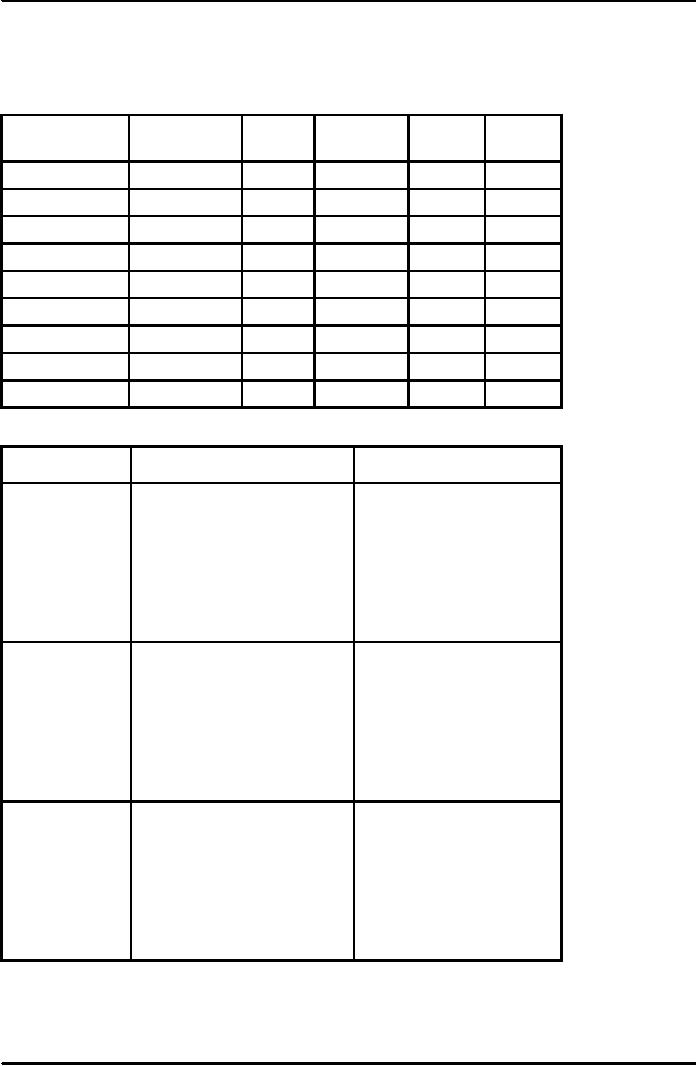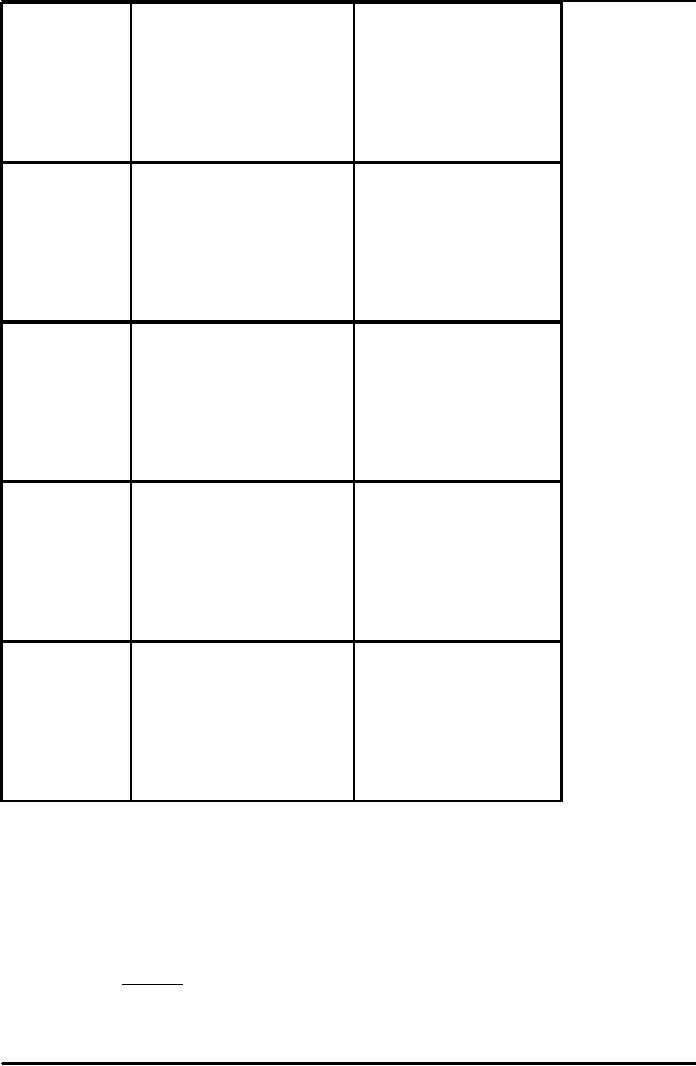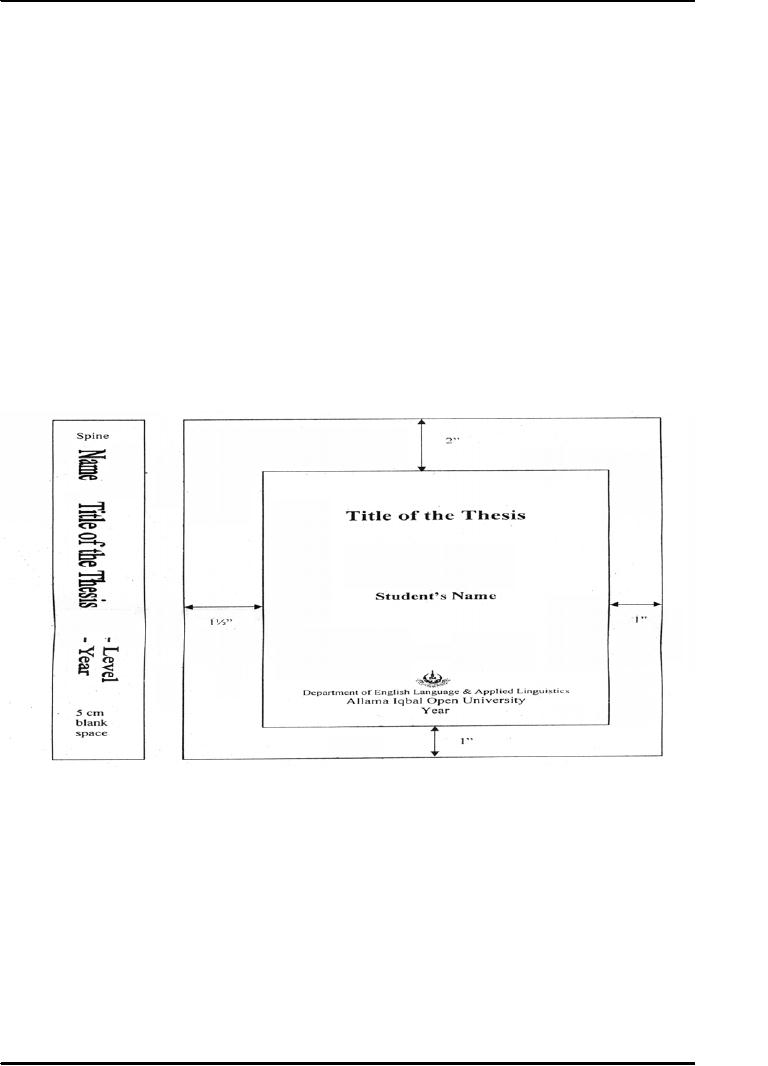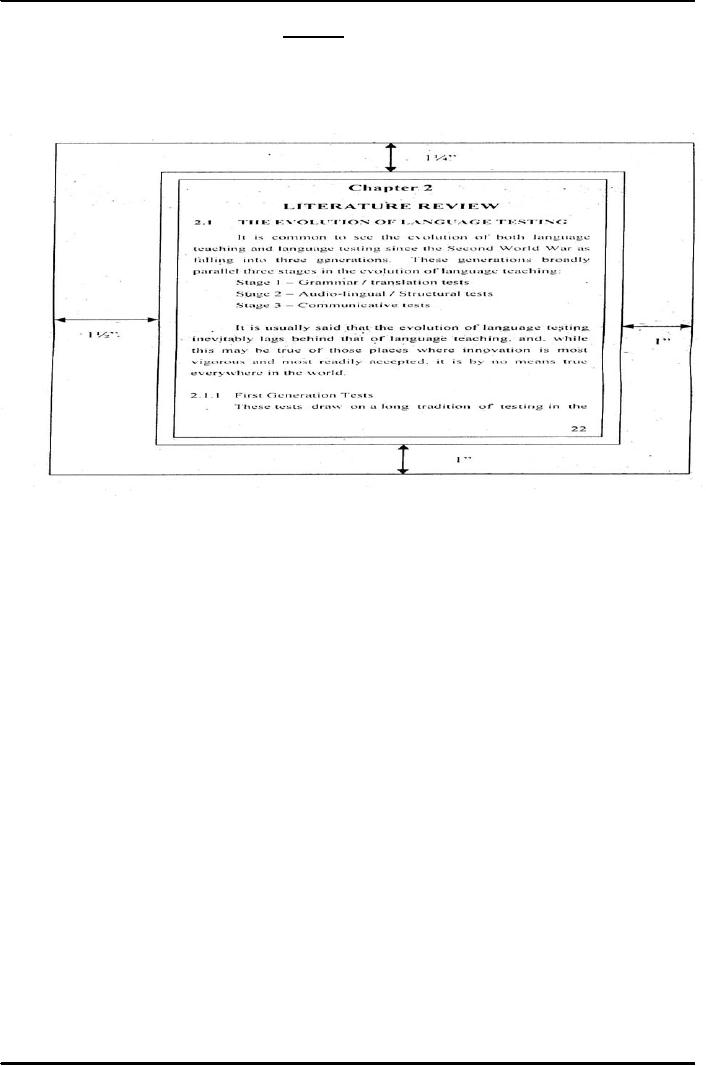 |
RESEARCH METHODOLOGY:Studies Primarily Qualitative in Nature |
| << THESIS WRITING AND PRESENTATION:Sections of a Thesis (Format) |
| RESEARCH METHODOLOGY:Basic Rules, Basic Form, Basic Format for Books >> |

VU
Lesson
44
RESEARCH
METHODOLOGY
Making
a Preliminary Choice of
Methodology
Distinguish
between three related
concepts:
i)
Research Perspectives
ii)
Research Types
iii)
Research Methods
Research
Perspectives
Quantitative
and Qualitative
Perspectives
A
research perspective, as used
here, is a general view and
use of research approaches
and methods.
There
are two major perspectives:
quantitative and qualitative. The
quantitative perspective derives
from a
positivist
epistemology, which holds that there is
an objective reality that can be
expressed numerically. As a
consequence
the quantitative perspective emphasizes
studies that are experimental in
nature, emphasize
measurement,
and search for relationships. If a
study uses language such as
the following, it probably
has
used
a quantitative perspective: variable,
controls, validity, reliability,
hypothesis, statically
significant.
On
the other hand, a qualitative perspective
emphasizes a phenomenological view in
which reality
inheres
in the perceptions of individuals.
Studies deriving from this
perspective focus on meaning
and
understanding,
and take place in naturally occurring
situations (McMillan, 1996). If a
study uses language
such
as the following, it probably has
used a qualitative perspective:
naturalistic,
field study, case study,
context,
situational,
constructivism, meaning, multiple
realities.
While
some researchers seem
chiefly concerned with the
differences between the two
approaches,
Morgan
(1997) explains how the two
perspectives can be combined. He identifies
four general ways of
combining
the two, based upon two
factors: which one is primary
and which, secondary; and
which one is
used
first and which,
second.
1.
Quantitative primary, qualitative first.
The researcher begins with a
qualitative approach as the
secondary
method,
using the qualitative data as a
basis for collecting and
interpreting the quantitative data (the
primary
method).
2.
Quantitative primary, quantitative
first. The researcher begins
with a quantitative approach as the
primary
method,
using qualitative follow-up to evaluate
and interpret the quantitative
results.
3.
Qualitative primary, quantitative
first. The researcher begins
by collecting quantitative preliminary
data as
a
basis for collecting and
interpreting the primary qualitative
data.
4.
Qualitative primary, qualitative
first. The researcher begins
with the primary qualitative data,
using
quantitative
follow up to interpret the qualitative
data.
Research
Types
The
term research type is used here to
identify the general research
approach. While authorities in
the
field seem to differ as to
how the types of research
are classified, the following
approaches, which are
most
often used in educational
research, represent some of the
options available to you as a
researcher. To
simplify
the discussion, they are divided
into whether they tend to use a
quantitative or a qualitative
perspective,
although there is much
overlapping in many of the
types.
Studies
Primarily Quantitative in
Nature
The
following types of research
are primarily quantitative in
nature.
Experimental
Research
Experimental
research uses methods
originally applied in the physical and
biological sciences. In
most
experiments the following procedures
are used: a sample of
subjects is selected; they are
assigned
randomly
to experimental and control groups; a
treatment is administrated to the experimental group
only.
206

VU
The
two groups are then
evaluated on the basis of the dependent
variable, the consequence of the
independent
variable. The latter is the
presumed cause of the dependent
variable.
Quasi-Experimental
Research
A
quasi-experimental design is one
that follows the general
procedures of experimental
research,
without
the use of control group or
without random assignment, since random
assignment or the use of
control
groups is often not feasible
in educational settings.
Causal-Comparative
Research
Causal
comparative studies are
designed to determine the possible
causes of a phenomenon.
Sometimes
these studies are called ex
post facto research.
Correlational
Research
Correlation
studies are designed to
analyze the relationships between two or
more variables,
ordinarily
through the use of correlation
coefficients.
Descriptive
Research
As
the term implies, the purpose of
descriptive research is to describe a
phenomenon. Descriptive
studies
report frequencies, averages,
and percentages. For
example, you might study the
attitudes.
Evaluation
Research
Evaluation
research makes judgments
about the merit or wroth of
educational programs,
products,
and
organizations. It is typically undertaken in
order to aid administrators in making
professional decisions.
Evaluation
studies are usually
described as either formative or
summative. Formative studies
are made while
a
new program or product is being
developed; summative studies,
when it has been completed.
You might
do
an evaluation of a new standards-based curriculum,
performing both a formative
and a summative
assessment.
Studies
Primarily Qualitative in
Nature
The
following types of research
tend to take a qualitative
perspective.
Case
Study Research
A
case study is an empirical inquiry
that investigates a contemporary phenomenon
within its real
life
context; when the boundaries between phenomenon
and context are not
clearly evident; and in
which
multiple
source of evidence are used.
Qualitative perspective, concerned
with exploring, describing,
and
explaining
a phenomenon.
Ethnographic
research
Ethnographic
research is a special types of
case study research. It is
distinguished from other
types
of
case studies because it uses
the theories and methods of
anthropology to study the culture of
schools and
classrooms.
Action
Research
Most
action research documents how an
educational problem was
identified, understood, and
solved
by practitioners.
Research
Methods
Research
methods, as the term is used here,
are the specific techniques
used to collect data
with
respect
to the research problem. In general, five
methods are typically used
in educational research.
1.
Test and measurements. Tests
are administered and
measurements made to determine the extent
of
change.
2.
Interviews. Interviews are
conducted with individuals or
groups to ascertain their
perceptions.
3.
Observations. Observations are
made to determine what is occurring and
what individuals are
doing.
4.
Surveys. Surveys are
administered to assess opinions,
perceptions, and
attitudes.
5.
Documents. Documents are
analyzed to establish the
record.
207

VU
Make
Preliminary Choices
The
process explained here assumes
that in developing the prospectus you
will make only a
preliminary
choice that may
Type/
Test,
Interview
Observation Survey
Documents
Method
measurement
Experiment
P
A
A
Quasi-experimental
P
A
A
Causal
comparison P
A
A
Correlational
P
A
A
Descriptive
A
A
P
A
Evaluation
P
A
A
A
A
Ethnographic
A
P
A
Action
A
P
A
Case
study
A
P
A
A
Quantitative
Research
Qualitative
Research
Key
concepts
Variable
Meaning
Controlled
Understanding
Reliable
Social
construction
Hypothesized
Context
Statistically
significant
Situation
Context
Used
Agriculture
Anthropology
Psychology
History
Political
Science
Sociology
Economics
Basic
Sciences
Goals
Test
theory
Ground
theory
Establish
facts
Develop
understanding
Show
relationship
Describe
multiple realities
predict
Capture
naturally occurring
Statistically
describe
Behavior
208

VU
Design
Structured
Evolving
Predetermined
Flexible
Formal
General
Specific
Data
Quantities
Verbal
descriptions
Counts
Field
notes
Measures/instruments
Observations
Numbers
Documents
Statistics
Techniques
or
Experiments
Observation
Methods
Quasi-experiments
Participant
observation
Structured
observations
Open-ended
interviewing
Review
of documents
and
Structured
interviews
Surveys
airfacts
Role
of Researcher Distant
Close
Short
term
Long
term
Detached
Involved
Uninvolved
Empathetic
Trusting
Intense
Data
Analysis
Deductive
Inductive
Ongoing
Stress
models, themes, and
concepts
Format
8.
FORMAT
8.1
Format
and Style
You
will be required to abide by the
following format and style
as specified by the Department.
Font
Time
New Roman
Chapter
Headings
18
Bold CAPS
Headings
14
Bold CPS
Sub-headings
14
Bold
(Do
not italicize
or
underline the headings and
sub-headings)
Text
12
Paper
Quality
Offset
Paper 90 grams
Paper
Size
A4
213mm x 275mm
209

VU
Spacing
Double
Paragraphing
Indented
& space between
paragraphs
Binding
Evaluation
CopySpiral binding
Final
Copy
Hardbound
covered with cloth
Color
of bindingDark Black
Spine
To
contain student's name, title of
the
thesis,
level and year
Citation
Manual
MLA
or APA (See Annex
???)
Margins
Left
1½"
3.8
cm
Right
1"
2.5
cm
Top
1¼"
3.2
cm
Bottom
1"
2.5
cm
Font:
Time
New Roman
Size:
Topic
24
bold
Student's
Name
18
bold
Name
of the Dept.
16
bold
Name
of the university 18 bold
Text
The
inner title would be the
same, plus:
i)
Statement of submission:
Submitted
in partial fulfillment of the
requirements for the MA TEFL at the
Department of
English
Language & Applied Linguistic,
Faculty of Social Science,
Allama Iqbal Open
University,
Islamabad.
ii)
Supervisor's Name
iii.
Month, Year
Font:
Time
New Roman
Size:
Chapter
Headings
18
bold
Headings
14
bold CAPS
210

VU
Sub-headings
14
bold
(Do
not italicize
or
underline the headings &
sub-headings)
Text
12
Alignment
Justified
Spacing
Double
Paraphrasing
Either
indent or don't but
consistent.
8.2
Organization
A
research thesis probably
include:
i.
Title
Page
ii.
Inner
Title
iii.
Abstract
(2 pages)
iv.
Acceptance
Certificate (Annex
E)
v.
Dedication
/ Acknowledgements (optional)
vi.
Content
List
vii.
Chapter
1: Introduction
viii.
Chapter
2: Literature Review
ix.
Chapter
3: Procedure of the study
x.
Chapter
4: Data Analysis
xi.
Chapter
5: Conclusion
xii.
Bibliography
xiii.
Appendices,
if any
Prelims
(Inner title content list) will be
numbered in Roam numerals i,
ii, iii, iv,
etc.
Arabic
numerals (1,2,3, etc) will
begin from Chapter 1:
How
to Made Documents
i)
AMA
ii)
APA
iii)
Chicago
211

VU
Your
essay should be typed, double-spaced on
standard-sized paper (8.5 X 11
inches) with margins
of
1 inch on all sides. Your
final essay should include, in the order
indicated below, as many of the
following
sections as are applicable,
each of which should begin on a separate
page:
Title
page: includes
a running head for
publication, title, and
byline and
affiliation.
General
APA Guidelines
Image
Caption: Sample APA title page;
running head and page number
in upper right-hand corner,
definition
of running head IN ALL CAPS,
and vertically and horizontally
centers the title of the paper,
its
author
and her affiliation to the
page.
Page
numbers and running head: in the upper
right-hand corner of each page, include a
1-2
word
version of your title. Follow
with five spaces and
then the page number.
Abstract:
If
your instructor requires an
abstract, write a 75-100
word overview of your essay,
which
should
include your main idea and
your major points. You also
may want to mention any implications
of
your
research. Place the abstract on
its own page immediately after the
title page. Center the word
Abstract
and
then follow with the
paragraph.
Headings:
Although
not absolutely necessary,
headings can be helpful. For
undergraduate papers,
only
one level of heading is necessary.
Major headings should be centered.
Capitalize every word in
the
heading
except articles (a, the),
short prepositions (in, by, for),
and coordinating conjunctions (and,
but, or).
Visuals:
Visuals
such as tables and figures
include graphs, charts, drawings,
and photographs. Try
to
keep the visuals as simple as
possible and clearly label
each visual with an Arabic
numeral (ex: Table 1,
Table
2, etc.) and include the title of the
visual. The label and the
title should appear on separate
lines above
the
table, flush left. Below the
table, provide the source. A
sample Figure treatment is shown
below.
212

VU
List
of References:
Create
your list of references on
its own page after the last
page of your text. Center
the title
References
one inch from the top of the
page. Double space.
Alphabetize the list of references by the
last
name
of the authors. If the work has no
author or editor, alphabetize the
work by the first word of the
title
(excluding
A, An, or The).
In-Text
Citations: The Basics
Reference
citations in text are covered on
pages 207-214 of the Publication
Manual. What follows
are
some general guidelines for
referring to the works of others in your
essay.
Note:
APA style requires authors to
use the past tense or
present perfect tense when
using signal
phrases
to describe earlier research.
E.g., Jones (1998) found or
Jones (1998) has
found...
APA
Citation Basics
When
using APA format, follow the author-date
method of in-text citation. This means
that the
author's
last name and the year of
publication for the source should
appear in the text, E.g.,
(Jones, 1998),
and
a complete reference should appear in the
reference list at the end of the
paper.
If
you are referring to an idea
from another work but NOT directly
quoting the material, or making
reference
to an entire book, article or other
work, you only have to
make reference to the author
and year of
publication
in your in-text
reference.
In-Text
Citation Capitalization, Quotes, and
Italics/Underlining
Always
capitalize proper nouns,
including author names and
initials: D. Jones.
If
you refer to the title of a source
within your paper,
capitalize all words that
are four letters
long
or
greater within the title of a
source: Permanence
and Change. Exceptions apply
to short words that are
verbs,
nouns,
pronouns, adjectives, and adverbs:
Writing
New Media,
There
Is Nothing Left to Lose.
(Note that in your
References
list, only the first word of a
title will be capitalized:
Writing
new media.)
When
capitalizing titles, capitalize both
words in a hyphenated compound word:
Natural-Born
Cyborgs.
213

VU
Capitalize
the first word after a dash or colon:
"Defining Film Rhetoric: The
Case of Hitchcock's
Vertigo."
Italicize
or underline the titles of longer works such as books,
edited collections, movies,
television
series,
documentaries, or albums: The
Closing of the American
Mind;
The
Wizard of Oz;
Friends.
Put
quotation marks around the titles of shorter works
such as journal articles,
articles from edited
collections,
television series episodes, and
song titles: "Multimedia Narration:
Constructing Possible
Worlds";
"The One Where Chandler Can't
Cry."
Short
Quotations
If
you are directly quoting
from a work, you will
need to include the author, year of
publication,
and
the page number for the reference
(preceded by "p."). Introduce the
quotation with a signal
phrase that
includes
the author's last name
followed by the date of publication in
parentheses.
According
to Jones (1998), "Students
often had difficulty using
APA style, especially when it
was
their
first time" (p. 199).
Jones
(1998) found "students often
had difficulty using APA style" (p.
199); what implications does
this
have for teachers?
If
the author is not named in a
signal phrase, place the
author's last name, the year
of publication,
and
the page number in parentheses after the
quotation.
She
stated, "Students often had
difficulty using APA style," (Jones,
1998, p. 199), but she
did not
offer
an explanation as to why.
Long
Quotations
Place
direct quotations longer than 40 words in a
free-standing block of typewritten
lines, and omit
quotation
marks. Start the quotation on a
new line, indented five
spaces from the left margin.
Type the
entire
quotation on the new margin,
and indent the first line of
any subsequent paragraph
within the
quotation
five spaces from the new
margin. Maintain double-spacing
throughout. The parenthetical
citation
should
come after closing punctuation
mark.
Jones's
(1998) study found the
following:
Students
often had difficulty using
APA style, especially when it
was their first time citing
sources.
This
difficulty could be attributed to the fact
that many students failed to
purchase a style manual or to
ask
their
teacher for help. (p.
199)
Summary
or Paraphrase
If
you are paraphrasing an idea
from another work, you only
have to make reference to the
author
and
year of publication in your
in-text reference, but APA
guidelines encourage you to
also provide the page
number
(although it is not required.)
According
to Jones (1998), APA style is a
difficult citation format
for first-time
learners.
APA
style is a difficult citation
format for first-time
learners (Jones, 1998, p.
199).
In-Text
Citations: Author/Authors
APA
style has a series of
important rules on using
author names as part of the author-date
system.
There
are additional rules for
citing indirect sources, electronic
sources, and sources without
page numbers.
Citing
an Author or Authors
A
Work by Two Authors:Name
both authors in the signal
phrase or in the parentheses each
time
you
cite the work. Use the word
"and" between the authors'
names within the text and
use "&" in the
parentheses.
214

VU
Research
by Wegener and Petty (1994)
showed...
(Wegener
& Petty, 1994)
A
Work by Three to Five Authors:
List
all the authors in the signal
phrase or in parentheses the first
time
you
cite the source.
(Kernis,
Cornell, Sun, Berry, & Harlow,
1993)
In
subsequent citations, only use the
first author's last name
followed by "et al." in the
signal phrase
or
in parentheses.
(Kernis
et al., 1993)
In
et al., et
should not be
followed by a period.
Six
or More Authors: Use
the first author's name
followed by et al. in the signal
phrase or in parentheses.
Harris
et al. (2001)
argued...
(Harris
et al., 2001)
Unknown
Author: If the
work does not have an
author, cite the source by
its title in the
signal
phrase
or use the first word or two
in the parentheses. Titles of books and
reports are italicized or
underlined;
titles of articles and chapters
are in quotation
marks.
A
similar study was done of
students learning to format research
papers ("Using APA,"
2001).
Note: In the
rare case the "Anonymous" is
used for the author, treat it as the
author's name
(Anonymous,
2001). In the reference list, use the
name Anonymous as the
author.
Organization
as an Author: If the
author is an organization or a government agency,
mention the
organization
in the signal phrase or in the parenthetical
citation the first time you
cite the source.
According
to the American Psychological Association
(2000),...
If
the organization has a well-known abbreviation,
include the abbreviation in brackets the
first
time
the source is cited and then
use only the abbreviation in later
citations.
First
citation: (Mothers Against Drunk
Driving [MADD], 2000)
Second
citation: (MADD,
2000)
Two
or More Works in the Same
Parentheses: When
your parenthetical citation includes
two or
more
works, order them the same
way they appear in the reference list,
separated by a semi-colon.
(Berndt,
2002; Harlow, 1983)
Authors
With the Same Last
Name: To
prevent confusion, use first
initials with the last
names.
(E.
Johnson, 2001; L. Johnson,
1998)
Two
or More Works by the Same
Author in the Same Year: If you
have two sources by
the
same
author in the same year, use
lower-case letters (a, b, c)
with the year to order the
entries in the
reference
list. Use the lower-case letters
with the year in the in-text
citation.
Research
by Berndt (1981a) illustrated
that...
Personal
Communication: For
interviews, letters, e-mails, and
other person-to-person
communication,
cite the communicators name, the
fact that it was personal
communication, and the date of
the
communication. Do not include personal communication
in the reference list.
(E.
Robbins, personal communication, January 4,
2001).
A.
P. Smith also claimed that
many of her students had
difficulties with APA style
(personal
communication,
November 3, 2002).
Citing
Indirect Sources
215

VU
If
you use a source that
was cited in another source,
name the original source in
your signal phrase.
List
the secondary source in your
reference list and include the
secondary source in the
parentheses.
Johnson
argued that...(as cited in
Smith, 2003, p.102).
Note:
When
citing material in parantheses,
set off the citation with a
comma, as above.
Electronic
Sources
If
possible, cite an electronic document the
same as any other document by
using the author-date
style.
Kenneth
(2000) explained...
Unknown
Author and Unknown Date: If no
author or date is given, use the
title in your signal phrase
or
the
first word or two of the
title in the parentheses and
use the abbreviation "n.d."
(for "no date").
Another
study of students and
research decisions discovered
that students succeeded with
tutoring
("Tutoring
and APA," n.d.).
Sources
Without Page
Numbers
When
an electronic source lacks page
numbers, you should try to include
information that will
help
readers
find the passage being cited.
When an electronic document has numbered
paragraphs, use the
symbol,
or the abbreviation "para." followed by
the paragraph number (Hall, 2001, 5) or
(Hall, 2001, para.
5).
If the paragraphs are not
numbered and the document includes
headings, provide the appropriate
heading
and specify the paragraph under
that heading. Note that in
some electronic sources, like
Web pages,
people
can use the Find function in
their browser to locate any
passages you cite.
According
to Smith (1997), ... (Mind
over Matter section, para.
6).
Note:
Never
use the page numbers of Web
pages you print out;
different computers print
Web
pages
with different pagination.
216
Table of Contents:
- COMMUNICATION:Definition of Communication, Communication & Global Market
- FLOW OF COMMUNICATION:Internal Communication, External Communication
- THEORIES OF COMMUNICATION:Electronic Theory, Rhetorical Theory
- THE PROCESS OF COMMUNICATION & MISCOMMUNICATION:Message
- BARRIERS IN EFFECTIVE COMMUNICATION /COMMUNICATION FALLOFF
- NON- VERBAL COMMUNICATION:Analysing Nonverbal Communication
- NON- VERBAL COMMUNICATION:Environmental Factors
- TRAITS OF GOOD COMMUNICATORS:Careful Creation of the Message
- PRINCIPLES OF BUSINESS COMMUNICATION:Clarity
- CORRECTNESS:Conciseness, Conciseness Checklist, Correct words
- CONSIDERATION:Completeness
- INTERCULTURAL COMMUNICATION
- INTERCULTURAL COMMUNICATION:Education, Law and Regulations, Economics
- INDIVIDUAL CULTURAL VARIABLES:Acceptable Dress, Manners
- PROCESS OF PREPARING EFFECTIVE BUSINESS MESSAGES
- Composing the Messages:THE APPEARANCE AND DESIGN OF BUSINESS MESSAGES
- THE APPEARANCE AND DESIGN OF BUSINESS MESSAGES:Punctuation Styles
- COMMUNICATING THROUGH TECHNOLOGY:Email Etiquette, Electronic Media
- BASIC ORGANIZATIONAL PLANS:Writing Goodwill Letters
- LETTER WRITING:Direct Requests, Inquiries and General Requests
- LETTER WRITING:Replies to Inquiries, Model Letters
- LETTER WRITING:Placing Orders, Give the Information in a Clear Format
- LETTER WRITING:Claim and Adjustment Requests, Warm, Courteous Close
- LETTER WRITING:When The Buyer Is At Fault, Writing Credit Letters
- LETTER WRITING:Collection Letters, Collection Letter Series
- LETTER WRITING:Sales Letters, Know your Buyer, Prepare a List of Buyers
- MEMORANDUM & CIRCULAR:Purpose of Memo, Tone of Memorandums
- MINUTES OF THE MEETING:Committee Members’ Roles, Producing the Minutes
- BUSINESS REPORTS:A Model Report, Definition, Purpose of report
- BUSINESS REPORTS:Main Features of the Report, INTRODUCTION
- BUSINESS REPORTS:Prefatory Parts, Place of Title Page Items
- MARKET REPORTS:Classification of Markets, Wholesale Market
- JOB SEARCH AND EMPLOYMENT:Planning Your Career
- RESUME WRITING:The Chronological Resume, The Combination Resume
- RESUME & APPLICATION LETTER:Personal Details, Two Types of Job Letters
- JOB INQUIRY LETTER AND INTERVIEW:Understanding the Interview Process
- PROCESS OF PREPARING THE INTERVIEW:Planning for a Successful Interview
- ORAL PRESENTATION:Planning Oral Presentation, To Motivate
- ORAL PRESENTATION:Overcoming anxiety, Body Language
- LANGUAGE PRACTICE AND NEGOTIATION SKILLS:Psychological barriers
- NEGOTIATION AND LISTENING:Gather information that helps you
- THESIS WRITING AND PRESENTATION:Write down your ideas
- THESIS WRITING AND PRESENTATION:Sections of a Thesis (Format)
- RESEARCH METHODOLOGY:Studies Primarily Qualitative in Nature
- RESEARCH METHODOLOGY:Basic Rules, Basic Form, Basic Format for Books